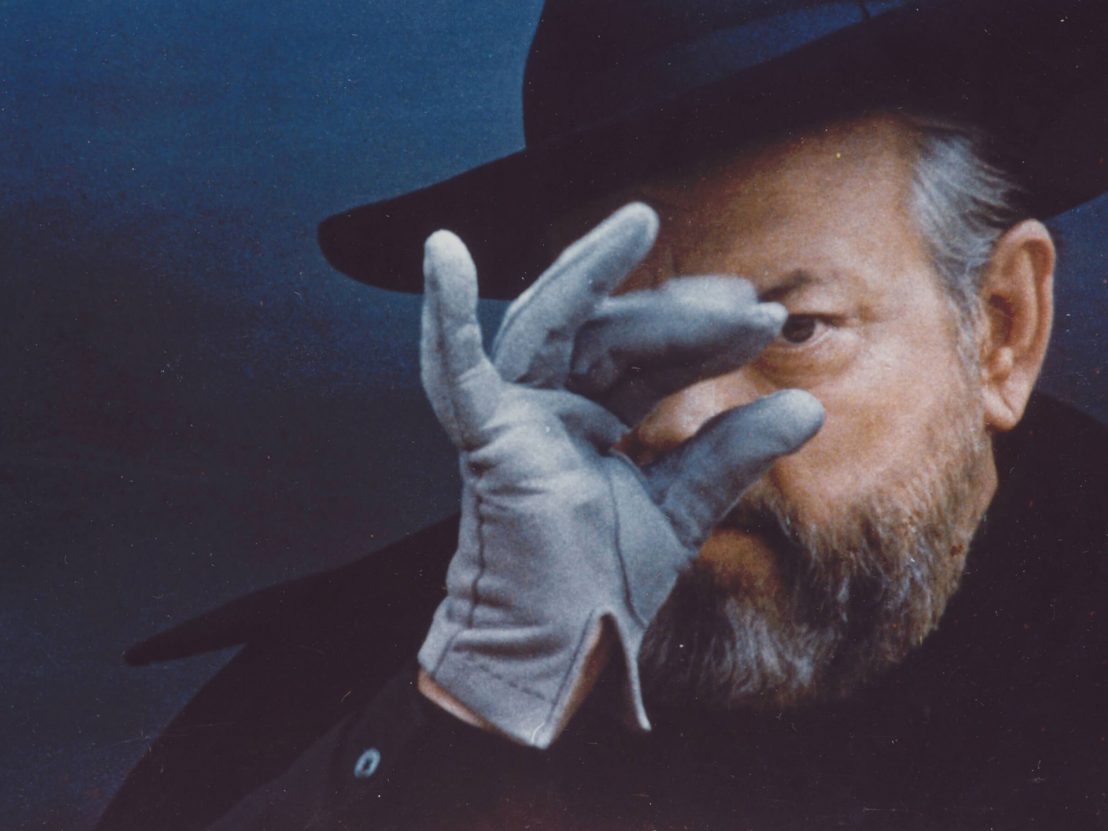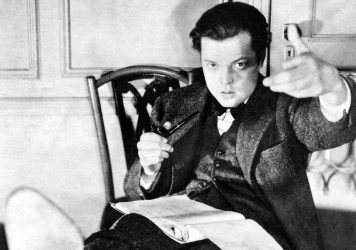
How should we describe F for Fake? Orson Welles’ penultimate completed feature (to be followed by the made-for-television Filming Othello) has been labelled as both a documentary and an essay film, but neither description seems an entirely comfortable fit for this slippery, shape-shifting creation. Welles himself was unwilling to definitively categorise it, only venturing to describe it as “a new kind of film” and a conscious departure from anything he had produced in his career to that point.
Perhaps the best way to approach F for Fake is to view it as a cinematic magic trick – the work of a master illusionist. The film opens with Welles demonstrating his sleight-of-hand for an awestruck child, and this introduction sets the tone, with the director shuffling the different elements of his story as easily as a deck of cards. “I’m a charlatan,” he cheerfully admits at the start of the film, before quickly adopting a grave tone and making a solemn promise: “During the next hour, everything you hear from us is really true and based on solid fact.” Like any good conjurer, Welles is taking this opportunity to profess that he has nothing up his sleeves before he proceeds to transfix, distract and hoodwink his audience.
F for Fake is presented as a series of nested stories, beginning with the tale of two forgers. Much of the footage in its first half is taken from a documentary that François Reichenbach had been filming about the notorious art forger Elmyr de Hory and his soon-to-be-notorious biographer Clifford Irving, whose fake memoirs of Howard Hughes emerged during the course of this film’s production and became one of the scandals of the decade.
“That the author of Fake!, a book about a faker, was himself a faker, and the author of a fake to end all fakes, and that he must have been cooking it up when we were filming him…” Welles sums up with evident glee in his near-constant narration, which ties the myriad of components together with the seductive flair of the great raconteur. He also uses this voiceover to muse on the nature of art, truth and trickery. “Is it art? Well, how is it valued? The value depends on opinion. Opinion depends on the experts. A faker like Elmyr makes fools of the experts, so who’s the expert? Who’s the faker?”
The tone is playful, but pointed and self-aware. Welles appears to see something of himself in these men. He recalls his time as a starving young artist in Ireland, when he got his break at the Gate Theatre by concocting an impressive but non-existent Broadway history for himself. He then achieved notoriety in the US with his panic-inducing radio broadcast of The War of the Worlds – two instances of fraud for which he was richly rewarded.
In fact, the further F for Fake progresses, the more it feels like a tacit act of autobiography. When he contemplates the overwhelming beauty of Chartres Cathedral in the film’s most melancholy sequence, Welles describes it as “the premier work of man perhaps in the whole Western world, and it’s without a signature.” Great works of art will stand tall long after we are all dust, he suggests, so why are we so concerned with assigning authorship?
Welles had a number of co-authors on F for Fake. Aside from Reichenbach, there was his partner Oja Kodar, who plays a key role in the tall tale that concludes the film, and the editors Marie-Sophie Dubus and Dominique Engerer, with whom Welles worked around the clock for a solid year in order to put this film together. It remains one of the most astonishing feats of editing in cinema – he drew footage from multiple sources, filmed over the course of years, and everything was assembled together into a seamless whole.
Every cut for Welles is another opportunity for misdirection; he takes shots of people in different countries and at different times and makes it appear as if they are standing in the same room. He includes apparent mistakes, such as a spool of film coming loose in the middle of a take, like a magician who bumbles his way through an act to make us drop our guard. Is this another form of forgery, or is it simply the art of good storytelling? As Welles reminds us when he quotes Picasso towards the end of the film, “Art is a lie — a lie that makes us realise the truth.”
Welles had hoped that this “new kind of film” would mark the beginning of a fresh phase in his career. He later told Cahiers du cinéma that he had consciously avoided any shots that might be regarded as “typically Wellesian”, but the irony is that F for Fake is probably the most Wellesian film he could have ever made. His spirit and personality infuse every frame. He sits at the centre of the film as a cigar-puffing master of ceremonies, delighting in his ability to manipulate sound and image, to reinvent the form before our eyes, and reminding us that he was never a more compelling and charismatic screen presence than when he was playing himself.
F For Fake plays as part of Light Show #1 – a season of films on 35mm curated by MUBI, the ICA and Little White Lies. The film screens on Friday 8 December at 8.30pm. Book tickets here.
Published 2 Dec 2017

Join us at ICA London for three days of celluloid miracles, including films by Orson Welles and Agnés Varda.

We have teamed with MUBI and the ICA to host a 35mm screening of this true original.

By Chris Owen
His withering letter to studio bosses is a filmmaking bible for our times.